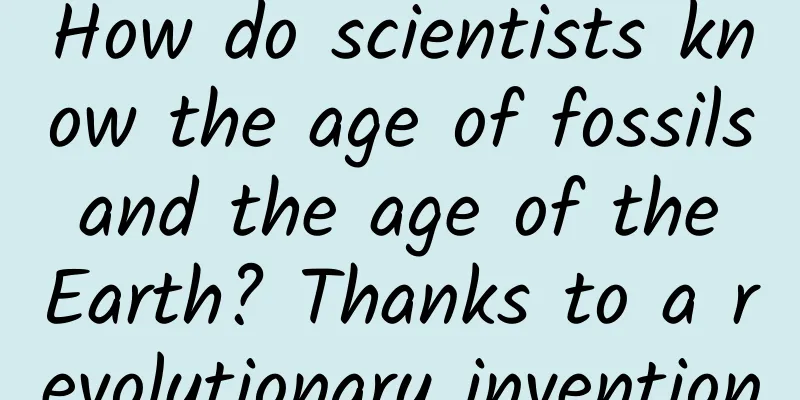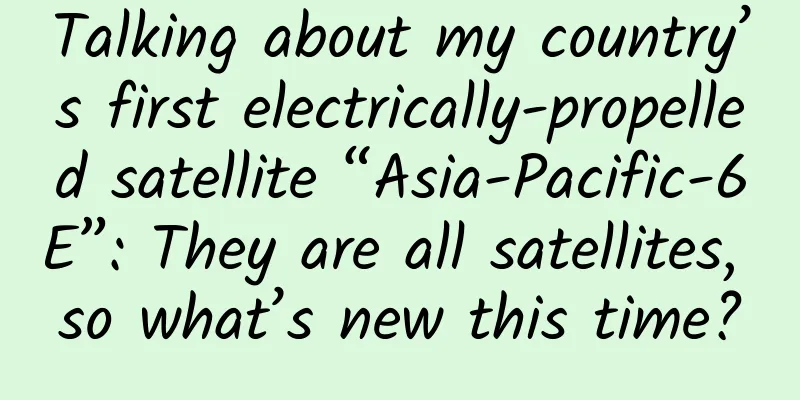How do scientists know the age of fossils and the age of the Earth? Thanks to a revolutionary invention

|
Before the use of physical and chemical methods to objectively identify the age of ancient fossils, geologists and archaeologists mainly relied on experience and circumstantial evidence to determine the age of ancient artifacts, which resulted in large errors. In 1940, American scientist Martin Kamen and his colleague Sam Rubin discovered carbon-14; in 1947, Willard Libby of the University of Chicago won the Nobel Prize in Chemistry for inventing the carbon-14 dating method. Since then, the vexing dating problem in archaeology, geology and hydrology has been revolutionary. How does carbon-14 determine the age of an object? Carbon (element symbol C) is the sixth element in the periodic table because there are six protons in the nucleus of a carbon atom. However, carbon has three common isotopes, namely carbon-12, carbon-13, and carbon-14 (abbreviated as C-12, C-13, and C-14), which have the same number of protons in their nuclei, but 6, 7, and 8 neutrons respectively. Among these three carbon isotopes, C-12 and C-13 are stable isotopes, which means they will remain there no matter how many years pass; while C-14 is a radioactive element, which means it is unstable and will decay into other substances with a half-life of 5730 years. That is, after 5730 years, half of C-14 will decay into nitrogen-14. This provides a method for calculating how many years a substance has existed. By measuring how much C-14 is left in the substance, we can roughly know how many years the substance has existed. This requires a premise, that is, the amount of C-14 is fixed, otherwise even gods cannot know how much should be left after a certain number of years, or even if the content is known, it is impossible to calculate how many years it has existed. And it just so happens that the natural isotopes of carbon on Earth usually exist at a stable value, that is, about 99% C-12, 1% C-13, and only one trillionth of C-14. The ratio between this one trillionth of C-14, C-12 and C-13 has become an important basis for scientists to calculate the age of certain substances. For example, plants or animals absorb carbon when they are alive, such as humans obtain carbon through breathing and food intake. These carbon elements accumulate in the body and the ratio is basically fixed. But once the organism dies, these elements are no longer absorbed, so C-12 and C-13 are fixed in the body, while C-14 begins to decay and decrease. Scientists take some samples from the remains or bones of ancient organisms that have been excavated or discovered, and use instruments to measure and calculate the carbon content in them, and then they get the ratio of C-14 to C-12 and C-13, and thus get the age of the remains. For example, if the C-14 in it is only half of what it should be, the age of the remains of this ancient organism is 5730 years, and so on. However, the C-14 dating method has a certain error. This is because the half-life of C-14 itself has an error of ±40 years, and each historical period or special environmental changes, such as volcanic eruptions, will cause fluctuations in the C-14 content. Therefore, when using the C-14 dating method, other reference objects are also used at the same time. For example, the values obtained by detecting C-14 in tree rings and stalactite rings will be used as a reference, which will be more accurate. According to foreign media reports, an international scientific team has carried out a major calibration of carbon-14 dating. The seven-year study used 15,000 samples collected from all over the world to draw a new and more accurate calibration curve, which can more accurately determine the age of objects 55,000 years ago. Therefore, the C-14 dating method is much better than those that relied entirely on experience in the past, such as the cultural relics market, which relied entirely on the experience of a few old experts. This is an objective standard that avoids many subjective errors. However, since the content of C-14 in objects is extremely small, the older the age, the rarer it is. Therefore, the relatively accurate dating is generally within 60,000 years. The longer the time, the greater the error. So how are the ages of fossils, rocks and the Earth determined? The ages of fossils and rocks are often hundreds of millions or even billions of years old, but how is the Earth's age of 4.6 billion years determined? In fact, although C-14 cannot be used to determine the age of fossils or rocks from a very ancient time, it has given people methodological inspiration. That is, since the C-14 radioactive isotope can be used to determine the age, and there are many radioactive isotopes, some with very long half-lives, why can't radioactive isotopes with longer half-lives be used to calibrate the age of more ancient materials? In fact, it is the radioactive elements with longer half-lives that are used to determine the age of ancient materials. For example, the isotope decay systems commonly used by geologists to determine the age of rocks include the C-14 method, the uranium-thorium-lead method, the samarium-neodymium method, the rubidium-strontium method, the potassium-argon method, and so on. These processes are quite professional and complicated, so I will not elaborate on them (see the picture above: Introduction to the uranium-thorium-lead method). In fact, we only need to understand the half-life of these elements and the process of their decay and eventually becoming stable elements to have a general idea. For example, there are three natural isotopes of uranium (chemical element symbol U), namely U-234, U-235, and U-238. Their nuclei all have 92 protons, but different numbers of neutrons, namely 144, 145, and 146. Their natural abundances are: U-238 is 99.275%, U-235 is 0.72%, and U-234 is 0.005%. The half-life of the three natural isotopes of uranium is: U-238 is 4.51 billion years, U-235 is 700 million years, and U-234 is 247,000 years. By measuring the ratio of isotopes based on the uranium content in various samples, we can know how long the object has lived since its birth. Other methods of determining radioactive elements are roughly calculated in this way. Before the radioactive element dating method was invented, people basically used empirical estimates or nonsense to estimate the history of the earth. For example, Aristotle in ancient Greece believed that time had no beginning and end, so the earth was infinitely old; and in the Middle Ages, many Christian theologians estimated the age of the earth to be between 5471 and 7519 years through the study of the Bible. There was even a believer who accurately calculated the birth date of the earth to be October 22, 4004 BC. Because at that time people always thought that the earth was the center of the universe, they believed that the age of the earth was the age of the universe. In fact, this is all nonsense. It was not until Darwin proposed the theory of species evolution after investigation that people's understanding of the world entered the scientific system and found that many fossils could not be explained by thousands of years. The earth is far from being as young as imagined. But how old is the earth? There has been no concept. It was not until the discovery of C-14 and the advent of Willard Libby's C-14 dating method that the era of using radioactive isotopes to determine the age of ancient objects began, and human understanding of the universe and the earth underwent earth-shaking changes. Through the investigation and determination of various geological ages on Earth, people know that the age of the Earth is at least 4 billion years. Claire Patterson, a geochemist at Caltech, once participated in the Manhattan Project to develop the atomic bomb, but he is more famous for calculating the age of the universe. In the 1950s, he improved the uranium-lead dating method and invented the lead-lead dating method. He measured the isotope content of lead in the Diablo Canyon meteorite and obtained the age of the Earth as 4.55±0.7 billion years old, an accurate estimate that no one has ever matched. Measuring meteorites can reveal the age of the Earth because meteorites are basically asteroids from the solar system, which are the product of the formation of the solar system and are celestial bodies of the same age as the Earth. However, Claire's calculation error is ±0.7 billion years, so the scientific community generally believes that the age of the Earth may be 4.6 billion years. In addition to calculating the age of the Earth, scientists have also used radioisotope dating to measure many geological conditions and paleontological fossils, such as dinosaur fossils, fossils from the Cambrian explosion, and the earliest microbial fossils, making humans more and more aware of the history of their homeland. What do you think about this? Welcome to discuss, thank you for reading. The copyright of Space-Time Communication is original. Infringement and plagiarism are unethical behavior. Please understand and cooperate. |
<<: Why do I feel sleepy when reading?
Recommend
I put the light into a bag during the day, and opened it at night. Why is it gone? Where did it go?
This is a common sense question that has been dis...
How does Tongcheng operate blind boxes that are popular all over the Internet?
Tongcheng Travel spent only 9 yuan to buy the rea...
Every bite may bring you one step closer to cancer! Its harm to the body is more terrible than you think
Reviewer of this article: Chen Haixu, Deputy Dire...
Cook's attack is Apple's retreat
WWDC 2015 is Apple's annual college entrance ...
The nicknames of the Winter Olympics venues are all about Chinese romance!
The "Water Cube" has been transformed i...
Four major marketing tactics for Children’s Day!
Non-high-energy warning: Another Children's D...
Google: How Android's private computing core protects data
Google has revealed more technical details about ...
Luoyang! Luoyang!
Luoyang A name that goes deep into the Chinese sp...
National Geography of Braised Pork
Written by Wei Shuihua Braised pork in red sauce ...
Beijing Universal Studios officially opens today. Let’s see what high-tech features have “cheated” you?
Beijing Universal Studios officially opens today!...
The price of parallel-imported iPhone 6 changes every day, down to 7,200 yuan
The iPhone 6, which was first launched globally o...
Opportunities and growth space for vertical media advertising monetization in 2020
In the mobile Internet era dominated by giants, s...
People who blush when excited must be careful of this disease
The term "red fever" has become very po...
Price inquiry for the production of Chizhou Transportation Mini Program. How much does it cost to produce Chizhou Transportation Mini Program?
There is no doubt that the topic of mini programs...
Xbox experience on Windows 10: Network conditions are very limited
To be precise, the streaming game mode like Xbox ...









